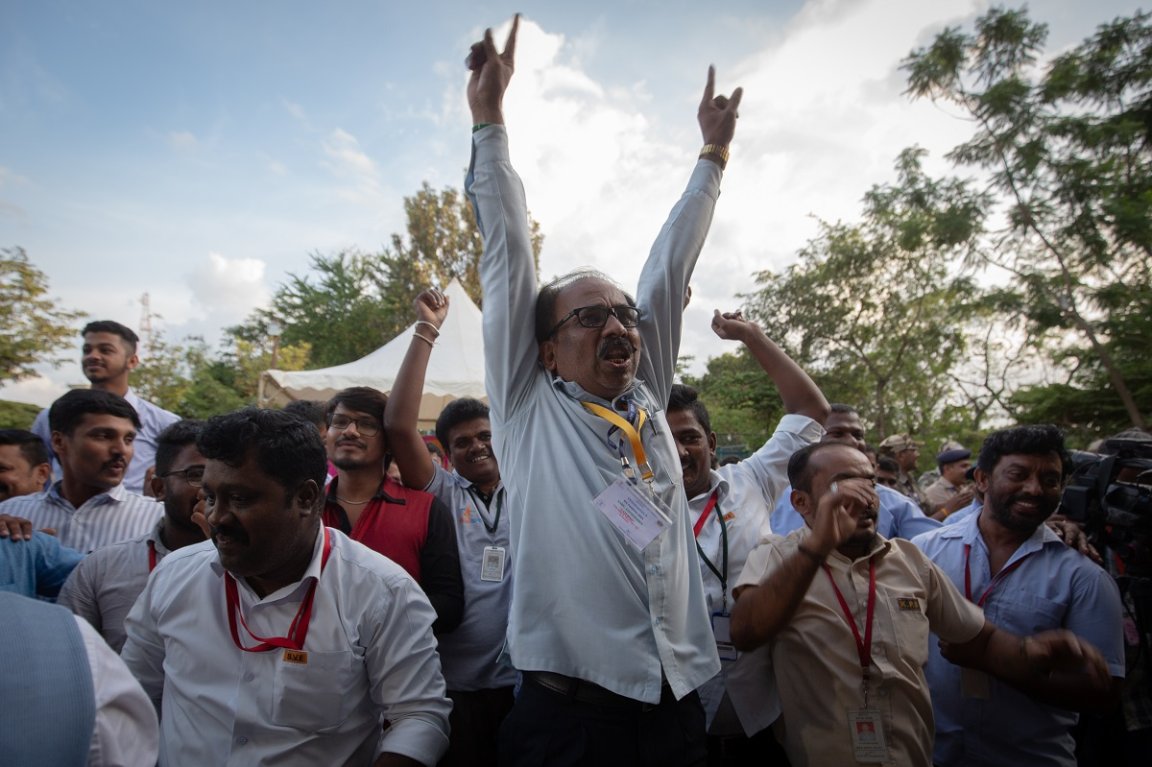
Space Race
India’s Chandrayaan-3 mission just made history. On Monday morning, the Indian Space Research Organization (ISRO) successfully landed its Vikram lander in the rough terrain of the Moon’s south pole, making India the first country to safely touch down in this unexplored region of the lunar surface — and crucially, besting Russia’s attempt to beat it to the punch, which ended in failure this week.
“India is on the moon,” said ISRO chief S. Somanath, as quoted by Reuters.
Adding to this already historic feat, India has also become the fourth country to pull off a soft Moon landing, proudly joining the US, the Soviet Union, and China.
“This is a victory cry of a new India,” said Prime Minister Narendra Modi, who was watching the landing while attending a summit in South Africa, per Reuters.
Second Wind
The achievement is a monumental bounce back for ISRO, after its previous landing attempt in 2019, Chandrayaan-2, crashed due to a software error.
This time around, ISRO wasn’t going to take any chances with its lander. Software deficiencies in the Vikram were ironed out, a new navigation instrument was outfitted, and its landing gear got an upgrade.
Russia wasn’t about to let India get all the glory, though. Roscosmos launched its own mission to land at the Moon’s south pole nearly a month after ISRO’s launch in mid-July. Its rush to the finish line ended in disaster, however, when its lunar lander smashed into the Moon just days before India’s attempt.
With Russia’s failure, and with Chandrayaan-3’s success, India has now achieved a significant symbolic victory, staking a claim for itself as one of the foremost space powers in the world — a firm usurping of the ailing Roscosmos, or at least the beginning of one.
Incredibly, ISRO pulled all this off with unparalleled cost efficiency, needing only a launch budget of just $75 million.
Tag Team
What’s next? For the next two weeks, Pragryan, a 57-pound rover carried aboard the Vikram, will patrol the Moon’s south pole, gathering data on the mysterious region’s geology.
Meanwhile, the Vikram will use its instruments to gather other crucial surface data, including measurements of seismic activity and surface temperatures. Both machines are solar powered, which is why they are only expected to operate for a fortnight — the duration until the next sunset on the Moon.
Their discoveries will likely be modest, but nonetheless will supply some of the best data yet on the south pole, parts of which are permanently shadowed.
India’s trailblazing will also break ground for NASA, which plans to send its own astronauts to the region in 2025.
More on space: Russia Sends Back Photos From Trip to Moon